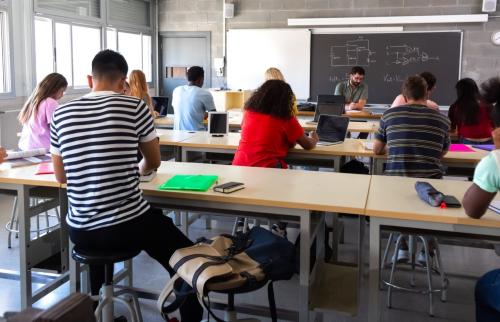Today President Obama is visiting the University of Iowa on the last day of a three-state tour promoting his proposal to keep the interest rate on new subsidized federal student loans at 3.4%. The rate will revert to 6.8% in July if Congress does not extend the temporary rate reduction that was enacted in 2007.
This proposal is likely to garner support from college-age voters as well as former college students—both graduates and dropouts—currently paying off their student loans. But the latter group may not know that the interest rate on their federal loans will not be affected by Obama’s proposal because it only applies to new loans.
Even presumptive Republican presidential nominee Mitt Romney appears to be confused on this issue, or at least willing to capitalize on this confusion in order to woo young voters. In announcing his support for extending the interest-rate reduction, Romney said “particularly with the number of college graduates that can’t find work or that can only find work well beneath their skill level, I fully support the effort to extend the low interest rate on student loans.” President Obama has also alluded to the short-term needs of students, asking a University of North Carolina audience yesterday “Anybody here can afford to pay an extra $1,000 right now?”
But the type of loans affected by the president’s proposal—new subsidized loans—do not accumulate interest until after students leave college. So a student struggling to afford college would not get any relief now—they would just face somewhat lower loan payments down the road.
There is no doubt that many college students and their families are being squeezed by rising college costs. And there are good reasons for the federal government to provide financial assistance to help low-income students afford college. But charging below-market interest rates on student loans is an inefficient and likely ineffective way to encourage college enrollment and completion because students don’t pay any interest until after they leave college.
Some degree of pandering to various groups of voters is to be expected in any presidential election year. But President Obama could focus his pitch to college students on his other, more significant proposals aimed at reducing college costs. In particular, the president’s proposal to provide prospective college students with much better information about institutions of higher learning—including their graduation rates and the earnings of their graduates—has the potential to force colleges to compete on quality and price rather than on amenities that drive up costs.
Even if this “College Scorecard” proposal can help drive down costs in the long run, it surely does not have the same appeal to voters as promising more money in their pockets right now. But if Obama and Romney want to buy the votes of struggling college students, they should at least propose the more efficient path of increasing the grants that students receive when they attend college, not decreasing the interest they pay after they leave.
The Brookings Institution is committed to quality, independence, and impact.
We are supported by a diverse array of funders. In line with our values and policies, each Brookings publication represents the sole views of its author(s).



Commentary
Obama and Romney: Wrong on Student Loan Interest Rates
April 25, 2012